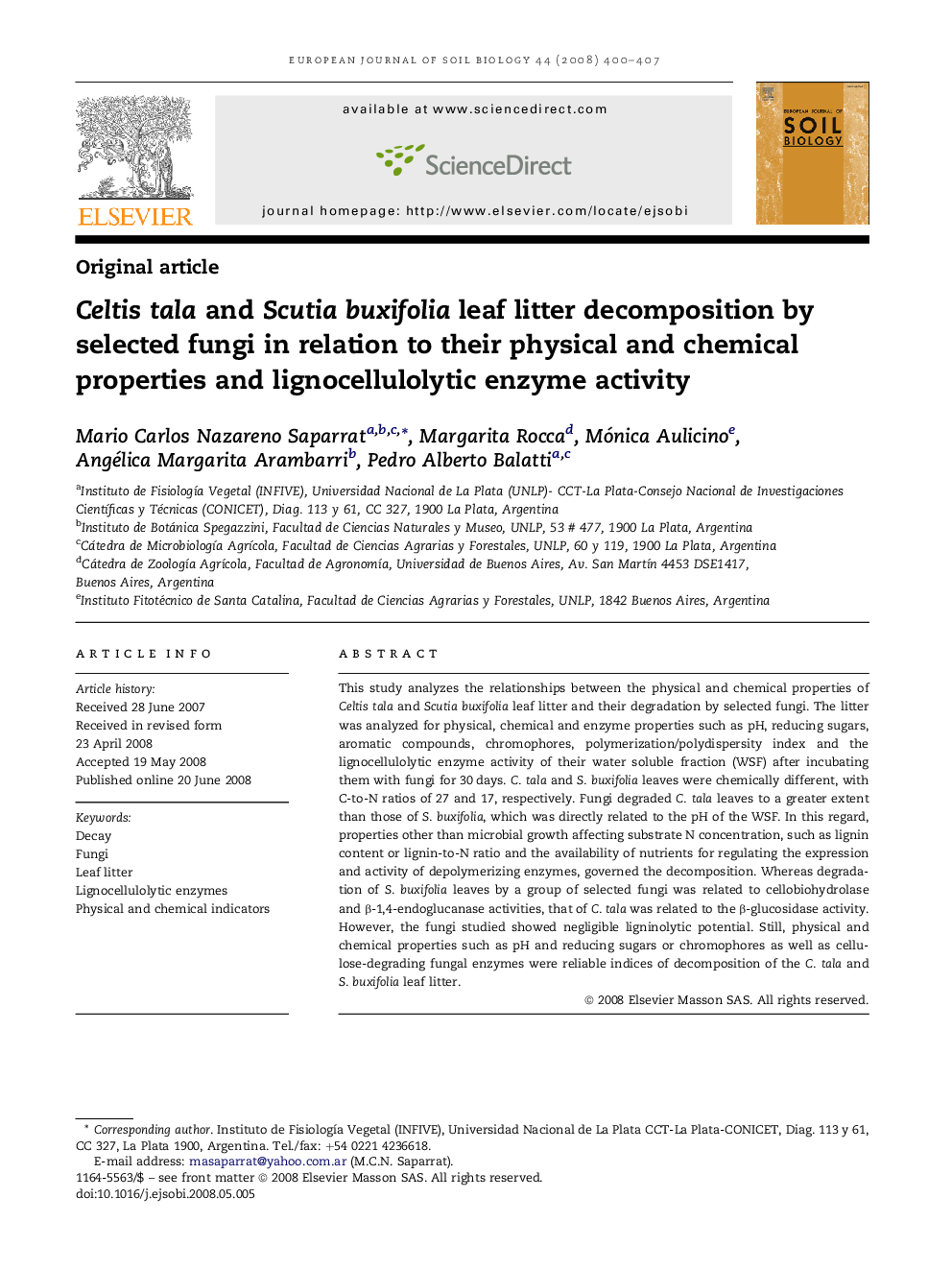| Article ID | Journal | Published Year | Pages | File Type |
|---|---|---|---|---|
| 4392243 | European Journal of Soil Biology | 2008 | 8 Pages |
This study analyzes the relationships between the physical and chemical properties of Celtis tala and Scutia buxifolia leaf litter and their degradation by selected fungi. The litter was analyzed for physical, chemical and enzyme properties such as pH, reducing sugars, aromatic compounds, chromophores, polymerization/polydispersity index and the lignocellulolytic enzyme activity of their water soluble fraction (WSF) after incubating them with fungi for 30 days. C. tala and S. buxifolia leaves were chemically different, with C-to-N ratios of 27 and 17, respectively. Fungi degraded C. tala leaves to a greater extent than those of S. buxifolia, which was directly related to the pH of the WSF. In this regard, properties other than microbial growth affecting substrate N concentration, such as lignin content or lignin-to-N ratio and the availability of nutrients for regulating the expression and activity of depolymerizing enzymes, governed the decomposition. Whereas degradation of S. buxifolia leaves by a group of selected fungi was related to cellobiohydrolase and β-1,4-endoglucanase activities, that of C. tala was related to the β-glucosidase activity. However, the fungi studied showed negligible ligninolytic potential. Still, physical and chemical properties such as pH and reducing sugars or chromophores as well as cellulose-degrading fungal enzymes were reliable indices of decomposition of the C. tala and S. buxifolia leaf litter.
